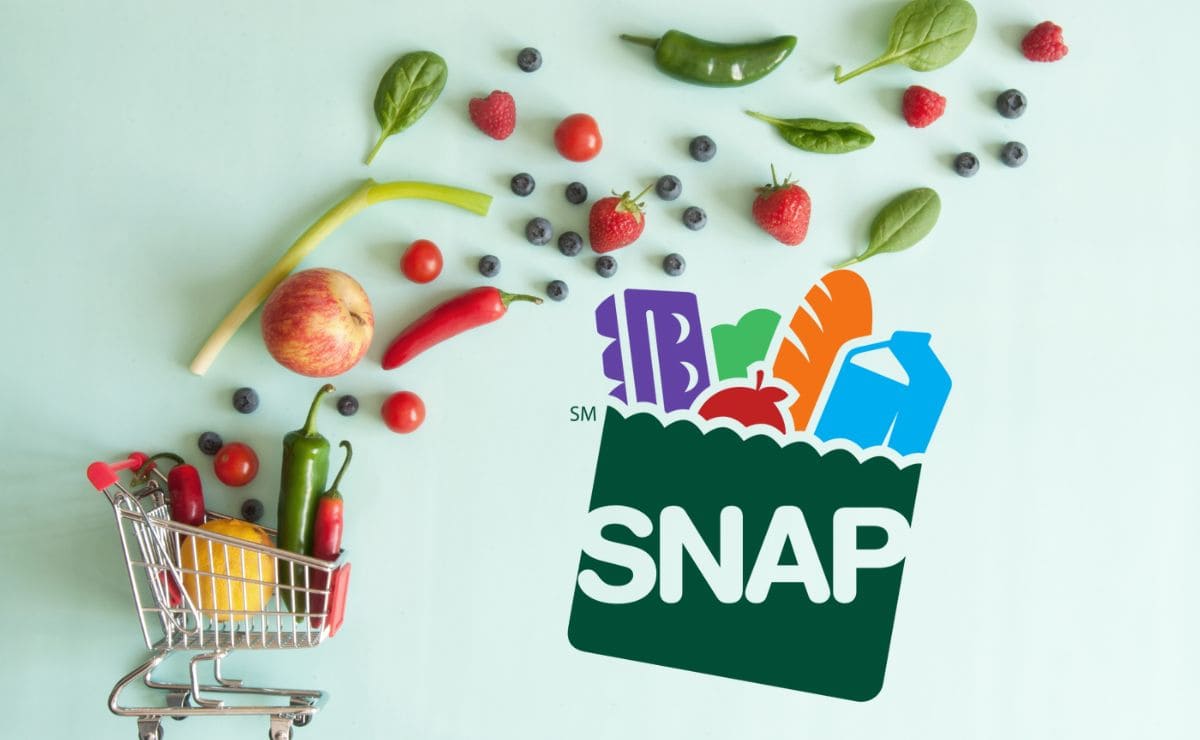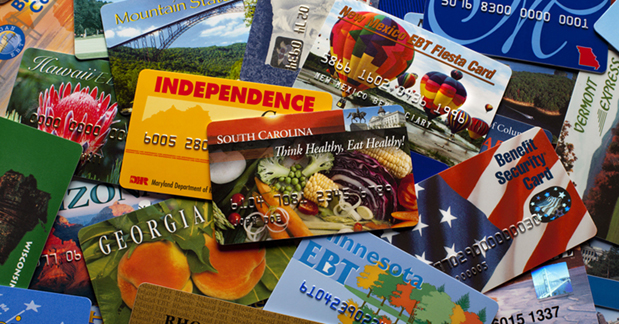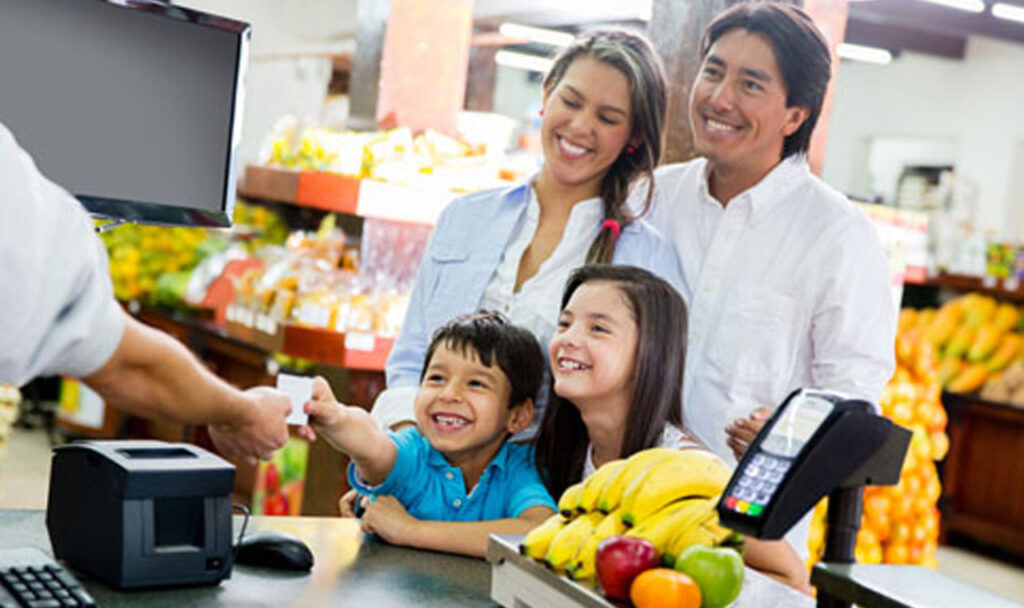SNAP is the main food assistance program in the U.S. that helps low-income individuals and families access an adequate diet. As of April 2023, the most recent month with available figures, it benefited 41.9 million people in a total of 22.2 million households, equivalent to 12.5% of the total U.S. population. It targets households with limited incomes, older adults and people with disabilities. The federal government covers the cost of benefits, and states are responsible for administering them. SNAP operates in all states, the District of Columbia, Guam and the Virgin Islands.
How to apply SNAP
- How do I apply for SNAP?
To apply for SNAP benefits, there are several options available. You can do so by visiting your local program office, accessing the state agency’s website, or by calling your state’s toll-free SNAP information line. In some states, you can also complete the application online.
Steps to apply for SNAP:
- Gather your documents: Before you apply, start gathering the necessary documents. However, don’t let a lack of documents stop you. You can apply with the information you have, and add more details later. Remember that benefits start counting from the moment you submit the application, even if it is incomplete.
- Submit your application: There are three main ways to submit your application:
- Online: Log in to your state government portal.You may need to create an account before you can complete the application.
- In Person: Go to the Department of Social Services (DSS) office.Fill out as many of the application forms as possible before your visit and bring the required documents with you.By Mail: Complete the application forms and mail them to your state DSS office. Contact information can be found under “SNAP offices” on our website.
- Speak with a caseworker: Once you have submitted your application, you will need to participate in an interview with a caseworker.During this interview, your eligibility, the amount of benefits you can expect, and next steps will be discussed.
- If you applied online, a caseworker will contact you within a few days to schedule the interview. This can be done in person, over the phone, or by video conference.You can be interviewed yourself or someone you choose as a representative.
- If you submitted your application in person, you may be interviewed during your visit or you may be able to schedule an interview at a later date.
Keep in mind that the SNAP program is handled independently in each state, so there may be variations in the process.

- Documents needed to apply for SNAP
To apply for SNAP benefits, you will need to submit the following documentation for everyone in your household who is applying:
- Proof of Identity: valid ID (driver’s license, birth certificate, official document).
- Proof of Residency: Proof of address (rental agreement, utility bill, rent receipt). If you are homeless, other criteria will apply.
- Social Security Number: Provide Social Security number for all persons applying for benefits.
- Proof of Immigration Status: Documentation showing immigration status for all non-citizen household members.
- Proof of Income: Proof of income received, such as:
- Payroll stubs for the last 4 weeks.
- Recent tax returns.
- Benefit letters from the Social Security Administration or Veterans Administration.
- Unemployment Insurance check stubs.
- Pension information.
- Proof of Monthly Expenses:
- Housing expenses (rent receipt, mortgage statement, real estate tax bills).
- Utility and telephone expenses.
- Proof of out-of-pocket medical expenses for persons over age 60 or disabled.
- Child and adult care expenses.
- Proof of resources (if applicable):
- Bank statements or other documents showing financial resources.
Additional documentation for more benefits
To increase the amount of benefits you can receive, consider providing the following additional information:
- Housing expenses: Proof such as rent receipt or mortgage statement.
- Utility expenses: Bills showing monthly costs.
- Medical expenses: Documentation of medical expenses for anyone in your household who is age 60 or older or disabled.
- Child and adult care expenses: Proof of costs associated with dependent care.
- Child Support: Documents evidencing support payments made by members of your household.
In some cases, other types of proof may be needed. Your agency worker will explain any additional information required to determine your eligibility for SNAP benefits.
- Who can apply?
Anyone over the age of 18 living in the household may apply for SNAP benefits. A household, in this context, is defined as all people living and sharing meals together.
Seniors and persons with disabilities have the option of requesting assistance from a friend or family member, known as an authorized representative, to apply on their behalf. This application can be made online or in person at the County Social Services Agency.
- What happens when I apply for SNAP?
After you submit your application, the state agency will process your case and let you know if you qualify for benefits within 30 days. During that period, you must complete an eligibility interview, which is usually conducted by telephone or in person, and provide the necessary documentation to verify the information you have provided.
If your household meets certain requirements, you could receive benefits within 7 days. For example, if you have less than $100 in liquid resources and $150 in gross monthly income, or if your combined income and resources are less than what you pay monthly for rent or utilities. For more details on these requirements, contact the state agency in your state of residence.
- SNAP Program Names by State and Territory
The SNAP program, officially known as the Supplemental Nutrition Assistance Program, takes on different names depending on the state or U.S. territory. These names reflect local adaptations of the program, with specific focuses on nutrition and food education in each region. Below is a list of SNAP program names by state or territory, so you can identify what it is called in your location.
| State/Territory | Program Name | Card Name |
| Alabama | Alabama Food Assistance Program | Alabama EBT Card |
| Alaska | SNAP | Alaska Quest Card |
| Arizona | AZ Health Zone | Arizona Quest Card |
| Arkansas | SNAP | Arkansas EBT Card |
| California | CalFresh Program | Golden State Advantage EBT Card |
| Colorado | SNAP | Colorado Quest Card |
| Connecticut | SNAP | Connecticut EBT Card |
| Delaware | Food Supplement Program | Delaware EBT Card |
| District of Columbia | SNAP | District of Columbia EBT Card |
| Florida | SNAP | ACCESS card |
| Georgia | Georgia Food Stamp Program | Georgia EBT Card |
| Guam | SNAP | Guam EBT Card |
| Hawaii | SNAP | Hawaii EBT Card |
| Idaho | SNAP | Idaho Quest Card |
| Illinois | SNAP | Illinois Link Card |
| Indiana | SNAP | Hoosier Works Card |
| Iowa | SNAP | Iowa EBT Card |
| Kansas | Food Assistance Program | Kansas Benefits Card |
| Kentucky | SNAP | Kentucky EBT Card |
| Louisiana | SNAP | Louisiana Purchase Card |
| Maine | SNAP | Maine EBT Card |
| Maryland | SNAP | Independence Card |
| Massachusetts | SNAP | Massachusetts EBT Card |
| Michigan | Michigan Food Assistance Program | Michigan Bridge Card |
| Minnesota | SNAP | Minnesota EBT Card |
| Mississippi | SNAP | Mississippi EBT Card |
| Missouri | SNAP | Missouri EBT Card |
| Montana | SNAP | Montana Access Card |
| Nebraska | Nutrition Education Program | Nebraska EBT Card |
| Nevada | SNAP | Nevada EBT Card |
| New Hampshire | SNAP | New Hampshire EBT Card |
| New Jersey | SNAP | Families First EBT Card |
| New Mexico | SNAP | New Mexico EBT Card |
| New York | SNAP | Common Benefit Identification Card (CBIC) |
| North Carolina | Food and Nutrition Services | North Carolina EBT Card |
| North Dakota | SNAP | North Dakota EBT Card |
| Ohio | Food Assistance Program | Ohio Direction Card |
| Oklahoma | SNAP | Oklahoma Access Card |
| Oregon | SNAP | Oregon Trail Card |
| Pennsylvania | SNAP | Pennsylvania Access Card |
| Rhode Island | SNAP | Rhode Island EBT Card |
| South Carolina | SNAP | South Carolina EBT Card |
| South Dakota | SNAP | South Dakota EBT Card |
| Tennessee | SNAP | Tennessee EBT Card |
| Texas | SNAP | Lone Star Card |
| Utah | SNAP | Horizon Card |
| Vermont | 3SquaresVT | Vermont EBT Card |
| Virginia | SNAP | Virginia EBT Card |
| Virgin Islands | Family Assistance Program | Virgin Islands EBT Card |
| Washington | Basic Food | Washington EBT QUEST Card |
| West Virginia | SNAP | Mountain State Card |
| Wisconsin | FoodShare | Wisconsin QUEST card |
| Wyoming | SNAP | Wyoming Card |

Benefits Food Stamps
- Monthly Family Unit Allowance
The amount a household receives in SNAP each month is called an allowance. This amount is calculated by expecting households to spend 30% of their net income on food. To determine the allowance, 30% of net income is subtracted from the maximum monthly amount for the household size.
Below is the maximum monthly allowance based on the number of people in your household:
| Persons in the Family Unit | Maximum Monthly Allowance |
| 1 | $291 |
| 2 | $535 |
| 3 | $766 |
| 4 | $973 |
| 5 | $1,155 |
| 6 | $1,386 |
| 7 | $1,532 |
| 8 | $1,751 |
| Each additional person | +$219 |
Note: These amounts apply to the 48 contiguous states and the District of Columbia. In Alaska, Hawaii, Guam and the U.S. Virgin Islands, the allowances are different.
- How do I calculate my SNAP benefit?
The amount of your SNAP benefit depends on your household’s net income and the size of your household. Here’s how you can calculate it:
- Multiply your net income by 30%.
Example:
If your household’s net income is $1,070:
$1,070 x 0.3 = $321 - Subtract 30% of your net income from the maximum allowance for your family size.
Example:
If your family is 4 people, the maximum allowance is $973.
$973 – $321 = $652
So, your monthly allowance would be $652.
Note: If you qualify for SNAP, you will receive benefits from the date you apply.
- When are SNAP benefits available?
The issuance of SNAP benefits varies depending on the state in which you live. Each state has its own distribution schedule, which may depend on factors such as your case number, date of birth, Social Security number or last name.
Although payment dates may vary, generally benefits are loaded onto your EBT card within the first 10 days of the month. An example of how this system works is the California payment schedule for September 2024:
- September 1: case number ends in 1.
- September 2: case number ends in 2
- And so on until September 10, when benefits are charged to those with a case number ending in 0.
To find out the exact date you will receive your benefits, check the specific calendar for your state or territory on the official USDA website.
APPLY TO EBT CARD- How long will I receive SNAP?
If you are eligible for SNAP, you will receive a notice telling you the length of your certification period, i.e., the time during which you will receive benefits. Before the end of this period, you will be sent another notice telling you that you must recertify to continue receiving SNAP. Your local office will provide you with detailed instructions on how to complete this recertification process.
3. ELIGIBILITY
To receive SNAP benefits, you must meet certain requirements. First, you must apply in the state where you live, as each state has its own application process and form. In addition, your household must meet established income and resource limits, which are updated annually.
If your state agency determines you are eligible, benefits will be awarded as of the date you apply.
- Who is in my household?
The “household” in SNAP includes the people with whom you live and share meals. This includes spouses and most children under age 22, even if they prepare their meals separately.
If you are age 60 or older or have a disability that prevents you from preparing your own meals, you and your spouse may be considered a separate household, as long as the income of the other members with whom you live does not exceed 165% of the poverty level.
Normally, you are not eligible for SNAP if an institution provides most of your meals, but there are exceptions:
- Seniors living in federally subsidized housing, even if they receive meals at the facility.
- People with disabilities who live in nonprofit group homes with fewer than 16 residents, even if the facility prepares meals for them.

- How many resources can I have and still be eligible for SNAP?
Families can have up to $2,500 in countable resources, such as a bank account, or $3,750 if at least one person is age 60 or older or disabled. However, some resources are not considered for SNAP, such as:
- Your home and land.
- Resources of people receiving Supplemental Security Income (SSI)
- Resources for people receiving Temporary Assistance for Needy Families (TANF)
- Most retirement and pension plans
Depending on the state where you live, you may have more resources than these limits and still be eligible. Many states have adopted broad-based categorical eligibility (BBCE), which allows more households to qualify for SNAP if they are already eligible for other state benefits, such as TANF. However, even with BBCE, you still must meet other eligibility rules and have low enough income.
Do vehicles count as a resource?
Yes, but there are exceptions. Vehicles are not considered a resource if:
- They are used to generate income (cab, delivery truck, etc.).
- They are needed to commute long distances to work.
- They are used for housing or to transport someone with a disability.
- If selling it would bring you less than $1,500.
If selling it would bring you less than $1,500.
If they are not excluded, market value over $4,650 counts as a resource, and some vehicles are subject to an equity test (value minus outstanding debt).
- Límites de ingresos SNAP
To receive SNAP benefits, your household must meet both gross and net income limits, unless there is an elderly or disabled person, in which case only net income needs to be met.
- Gross income: Total income before deductions.
- Net income: Gross income minus allowable deductions.
All income is counted in determining eligibility, including wages, unearned income, SSI, and veterans’ benefits. If everyone in your household receives TANF or SSI, you may already be eligible for SNAP.
SNAP Income Eligibility Limits (for the period October 1, 2023 to September 30, 2024)
| Household size | Gross monthly income | Net monthly income |
| 1 | $1,580 | $1,215 |
| 2 | $2,137 | $1,644 |
| 3 | $2,694 | $2,072 |
| 4 | $3,250 | $2,500 |
| 5 | $3,807 | $2,929 |
| 6 | $4,364 | $3,357 |
| 7 | $4,921 | $3,785 |
| 8 | $5,478 | $4,214 |
| Each additional member | +$557 | +$429 |
Note: Limits are higher in Alaska and Hawaii.
- Allowable SNAP Deductions
When applying for SNAP, you can deduct certain expenses from your income to determine your eligibility. Allowable deductions include:
- Deduction of 20% of earned income.
- Standard deduction of $198 for family units of 1 to 3 persons (larger for larger units and in Alaska, Hawaii, and Guam).
- Deduction for dependent care necessary for work, training or education.
- Medical expenses for elderly or disabled adult members in excess of $35 per month (if not covered by insurance).
- Child support payments legally due in some states.
- Standard shelter deduction of $179.66 for homeless family units.
- Excess shelter costs (more than half of income after deductions).
Deduction for medical expenses
Medical expenses in excess of $35 per month may be deducted, including:
- Medical bills and prescription drugs.
- Hospitalization and nursing care expenses.
- Certain transportation costs and health insurance premiums.
Special diets such as medical expenses are not allowed.
Shelter Expense Deduction
Applies to shelter expenses that exceed one-half of household income. Allowable costs include:
- Fuel, electricity and water.
- Rent or mortgage and interest.
- Housing taxes
The shelter deduction limit is $672, except for households with an elderly or disabled adult, where all costs in excess of one-half of income may be deducted.
Example calculation for units with elderly/disabled persons:
| Step | Calculation | Result |
| Household size | 2 elderly or disabled | |
| Gross monthly income | $1,000 (Social Security) + $200 (pension) | $1,200 |
| Subtract 20% deduction | $0 (sin ingresos del $0 (no earned income) | $0 |
| Subtract standard deduction | $1,200 – $198 | $1,002 |
| Subtract dependent deduction | $0 | $0 |
| Subtract medical costs | $1,002 – $300 (medical expenses) | $702 |
| Half of adjusted income | $702 / 2 | $351 |
| Shelter costs | $600 – $351 | $249 |
| Subtract excess amount | $702 – $249 | $453 |
The unit meets the income test if the net income is less than $1,644 for a 2-person household.

- Older adults and people with disabilities
Older adults are considered to be those who are 60 years of age or older. For SNAP, a person is considered disabled if he or she meets at least one of the following criteria:
- Federal disability or blindness payments through the Social Security Act, including SSI.
- State disability payments under SSI rules.
- Disability retirement benefit from a government agency for permanent disability.
- Annuity under the Railroad Retirement Act, eligible for Medicare or deemed disabled under SSI.
- Veteran who is totally disabled, homebound or in need of regular assistance.
- Surviving spouse or child of a veteran who receives VA benefits and is considered permanently disabled.
Information about the status of your application
If you cannot go to your local SNAP office or do not have internet access, you can designate someone as an authorized representative to act on your behalf. This must be done in writing.
Note: Remember to contact your State SNAP agency directly to request information and to find out the status of your application. The Food and Nutrition Service (FNS) does not process applications or have access to case information.
- Work Requirements
There are two sets of work requirements for SNAP:
- General Requirements: If you are between the ages of 16 and 59 and are able to work, you must comply with the following::
- Register for work.
- Participate in the SNAP employment and training (E&T) program or in the state agency’s assigned work assistance program.
- Accept suitable work if offered.
- Not voluntarily quit a job or reduce your work hours below 30 hours a week without good cause.
Exemptions: You do not need to meet these requirements if:
- You work at least 30 hours a week or earn at least the federal minimum wage for that time.
- You meet the work requirements of another program, such as TANF.
- You care for a child under age 6 or a disabled person.
- You are unable to work because of a physical or mental limitation.
- You participate in an alcohol or drug treatment program.
- You are a part-time student in a school or training program (college students have different rules).
If you do not meet the general requirements and you should, you will be disqualified from receiving SNAP for at least one month.
- Requirements for Able-Bodied Adults without Dependents (ABAWD): If you are between the ages of 18 and 52 and have no dependents, you must meet additional work requirements to get SNAP for more than 3 months in a 3-year period. You can meet this by:
- Work at least 80 hours per month (can be paid, unpaid or volunteer).
- Participate in a work program at least 80 hours per month.
- Combine work hours and work program to total at least 80 hours per month.
- Participate in the work assistance program according to the number of hours assigned each month.
Note: Effective October 1, 2024, these rules will apply to persons age 18-54.
ABAWD Exceptions: You do not need to meet this requirement if:
- You are unable to work because of a physical or mental limitation.
- You are pregnant.
- You have a child under 18 in your SNAP household.
- You are a veteran.
- You are experiencing homelessness.
- You are 24 years old or younger and were in foster care when you turned 18.
- Non-Citizen Eligibility
SNAP eligibility does not extend to undocumented noncitizens. Under the Food and Nutrition Act of 2008, SNAP benefits are reserved for U.S. citizens and certain non-citizens who are in the country lawfully.
To qualify for SNAP, non-citizens must meet one of the following criteria:
- Have resided in the United States for at least 5 years.
- Be receiving assistance or disability benefits.
- Be a child under the age of 18.
In addition, these individuals must meet other SNAP eligibility requirements, including income and resource limits.
If some members of a household are ineligible, State agencies must assess the eligibility of the remaining members seeking assistance.

4. ELIGIBILITY
There are several additional programs that complement food support and provide resources for different groups of people. The most prominent of these are listed below:
- Special Supplemental Nutrition Program for Women, Infants and Children (WIC)
The WIC program provides:
- Nutrition education and breastfeeding support.
- Specific healthy foods for pregnant women, new mothers, infants and young children.
- Referrals to health and other community services.
- Vouchers for fresh fruits and vegetables at the farmers’ market during the summer months, available to parents, grandparents and working families.
- Supplemental Nutrition Assistance Program (SNAP-Ed) Education
SNAP-Ed offers:
- Education about healthy nutrition and how to maximize the use of food dollars.
- Promotion of physical activity for people of all ages.
- Guidance in accordance with the Dietary Guidelines for Americans and MyPlate.
- Basic Food Supplement Program (CSFP)
The CSFP is designed to:
- Provide low-income seniors with a monthly box of nutritious foods.
- Provide nutrition education.
- Deliver vouchers for fresh fruits and vegetables at the farmers market during the summer months through the Senior Farmers Market Nutrition Program.
- D-SNAP (Disaster Supplemental Nutrition Assistance Program)
D-SNAP helps:
- Individuals living in a state with a President’s Individual Assistance declaration.
- Provide funds on an Electronic Benefit Transfer (EBT) card to pay for food.
- Enable those who do not normally receive SNAP benefits to qualify for D-SNAP in the event of a disaster.
- SUN BUCKS (Summer EBT)
SUN BUCKS is intended for:
- Families with school-age children to help purchase food during the summer.
- Provide $120 on an EBT card for each eligible child, distributed as $40 per month during June, July and August.
Allow food purchases at most grocery stores, farmers markets and other authorized retailers, including online at stores like Amazon and Walmart.
